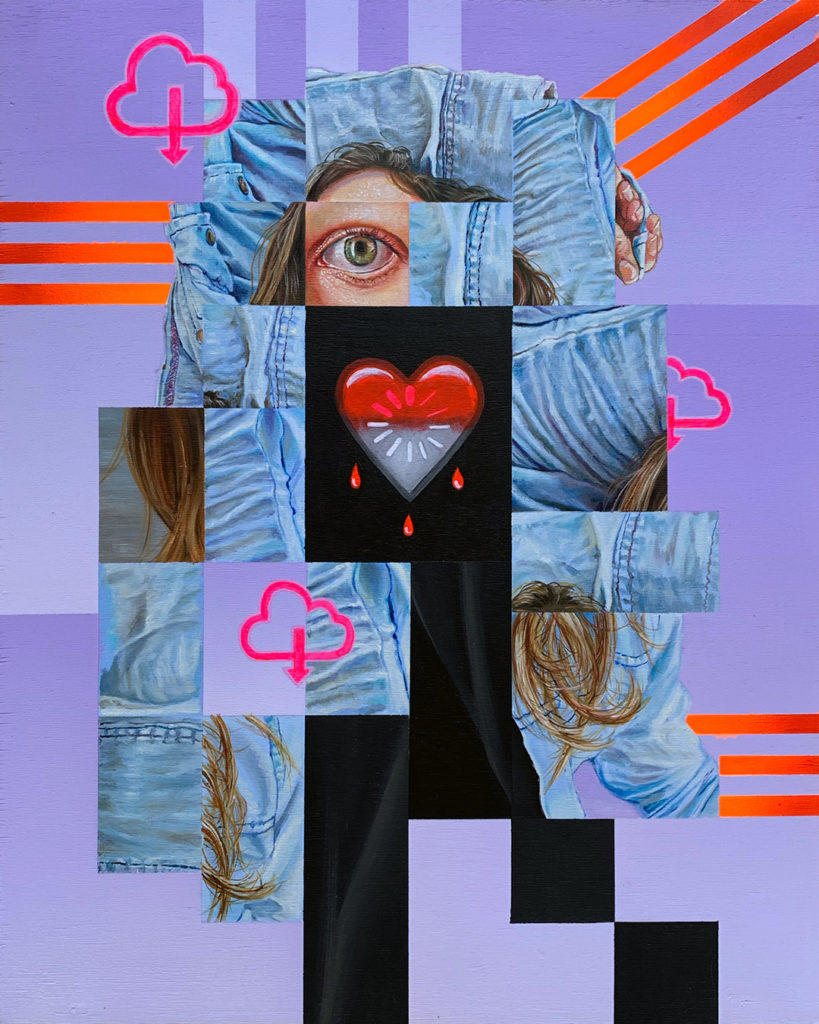TWS –Hi Juan, please tell us something that you’d love people know about you
Hi Max! I wouldn’t know exactly what, since I don’t post much about myself rather than my own work. I think I’m a little shy when it comes to post or say something about myself. Definitely a point I would like to improve this 2021!
TWS –You’re from Corrientes, Argentina. I’ve got good friends from there. Please, tell us something about the city and if there’s something of your environment that you feel that got into your art.
JMS –Corrientes is a city in the north east of Argentina, right below Misiones (Where the Iguazú falls are). It is a very warm city (In summer you can get 100º F / 40º C days) and its surrounded by the Paraná river, which is a very large one, and where people from around the globe comes for fishing… Not my case, lol.

TWS –How did you started making art? And being self-taught, how did you perfected your technique?
JMS –Although I’ve drawn things for all my life, as far as I remember… I started painting while studying an advertising career in Buenos Aires, back in 2005. I had this art class in the career, and since I got the materials and needed something to hang in my apartment… I started painting. I remember the first thing I painted was some sort of copy of the Picasso’s Meninas, but with my dogs in it. It was fun!
TWS – Your work is informed by the Flemish masters, cubism, pop art and the digital age. Please tell us about your influences, and how did you got to join pieces so far from each other to create a language of your own?
JMS – Although my influences vary from time to time, some of them always stay… Initially I was a huge Picasso fan, then I had a Dali period… later on I found Robin Eley and Erik Jones’ work, to name some of the painters that had a big influence on me. But nowadays influences mostly comes from everywhere and everything. And it doesn’t have to be a painter at all!
TWS –In your website you talk about the concept of disconnection. How’s important that idea to understand your work?
JMS –It’s the idea that floats around my work. The idea of how technology is here to connect us, but ends up alienating us and doing exactly the opposite, making us leave behind everything that really matters (friends, family and real life experiences). It’s a concept I’ve developed not quite knowing I was developing it at all. But I think it’s so present now, I can’t get to compose anything without that thought in mind.


TWS – I the age of selfies, social media and the cult of egos, you choose to deconstruct people in your portraits. Can you tell us something about that?
JMS –It is part of a deeper thought… I mean, why the egocentrism? Who do you want to be? Someone different, or just another perfect body? Social media doesn’t reflect what people really are anymore. Its all the same: Your perfect body; a trip; same memes; same everything. In my works I try to go a little deeper into every person I paint.
TWS Your work is pop in a modern way, using popular culture icons (defragmented and reconstructed). Who and why you like to include in your paintings?
JMS –Well, actually I don’t know if I would like to include more pop characters in my paintings anymore. I think everything has gone too pop now, because it’s what people recognizes. So we’ve seen a thousand different Mickeys in the past years… but… I won’t say I wouldn’t do a Mickey in my own style Lol!

TWS –I’ve seen on your Instagram profile some time lapse videos of you painting your impressive artworks and I noticed that you had a laptop where you had a reference image. How do you work? Do you create digital artworks that you later paint? Can you please walk us through your process?
JMS –Yes! that’s right! I try to use what I’ve learned during my advertising career, with Photoshop and illustrator. But first always comes the idea. When the concept is decided and I know what I want to express in that paint, then I either sketch and/or search for photo and image references that I’d like to include in the artwork (depending each piece). Next step is making the final digital sketch in Photoshop or Procreate, to finally paint it on canvas or on wall.
TWS –You work on canvas, but also on murals and large-scale pieces. What are the challenges you face in such different scales?
JMS –You could think that large scale pieces are the hardest ones, but for me the real challenge comes in doing a small consistent piece. It takes a some extra time to adjust myself to the canvas.

TWS –Do you feel your work is related with collage in some point?
JMS –It is, for sure! Though I never thought of it, just until last year, but it is! It could be said my works are some kind of painted collages.
TWS –Finally, the only question we ask all the interviewees: What’s your own and personal definition of collage?
JMS –To me collage is an in-depth view of something. It’s being able to cut it ties with it’s original meaning to assign it a new meaning. It’s taking an image (or many), and destroy it to assemble a bigger and newer thought. Collage is a very personal think because it always involve our own perspective and ideas. It’s something almost intimate.
After reflecting on these issues, I think my work is much more related to collage than it may initially seem.
Find more about More Juan Manuel on his website or his Instagram.












